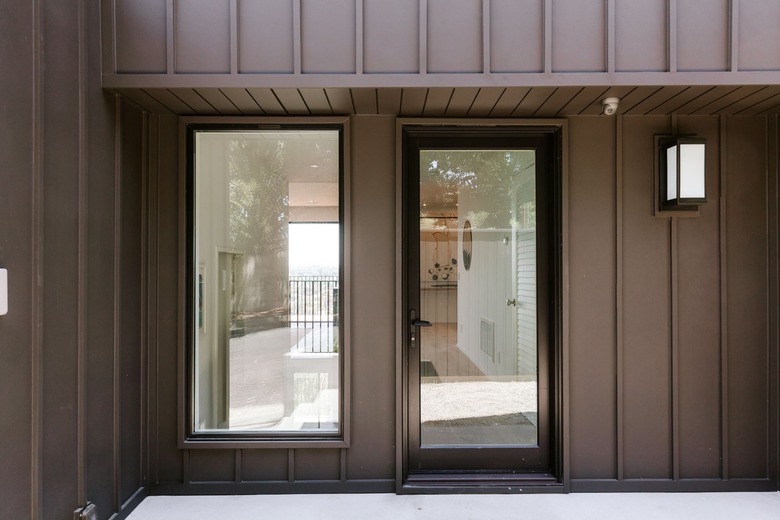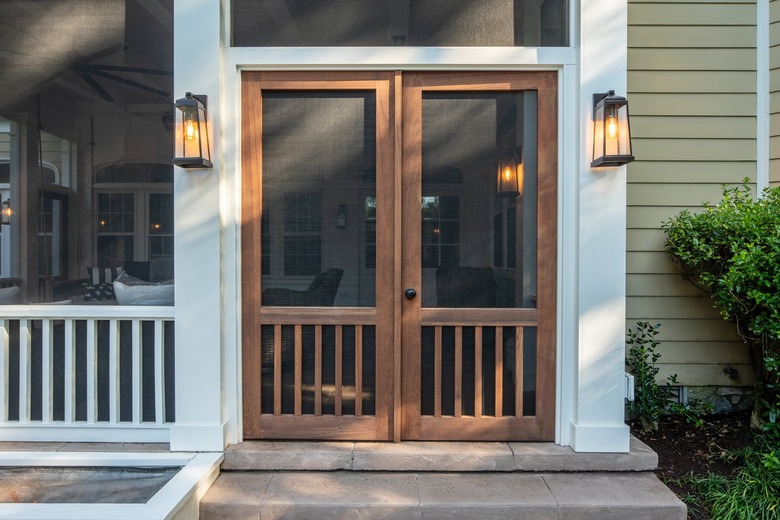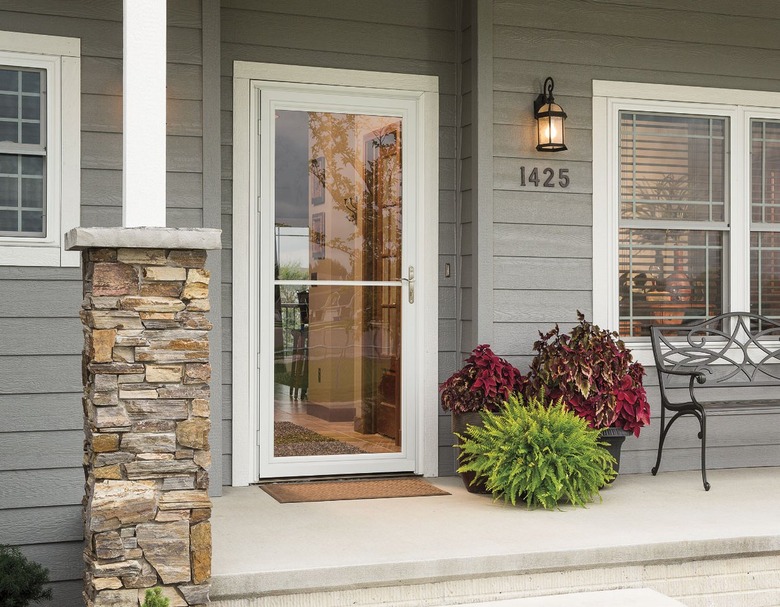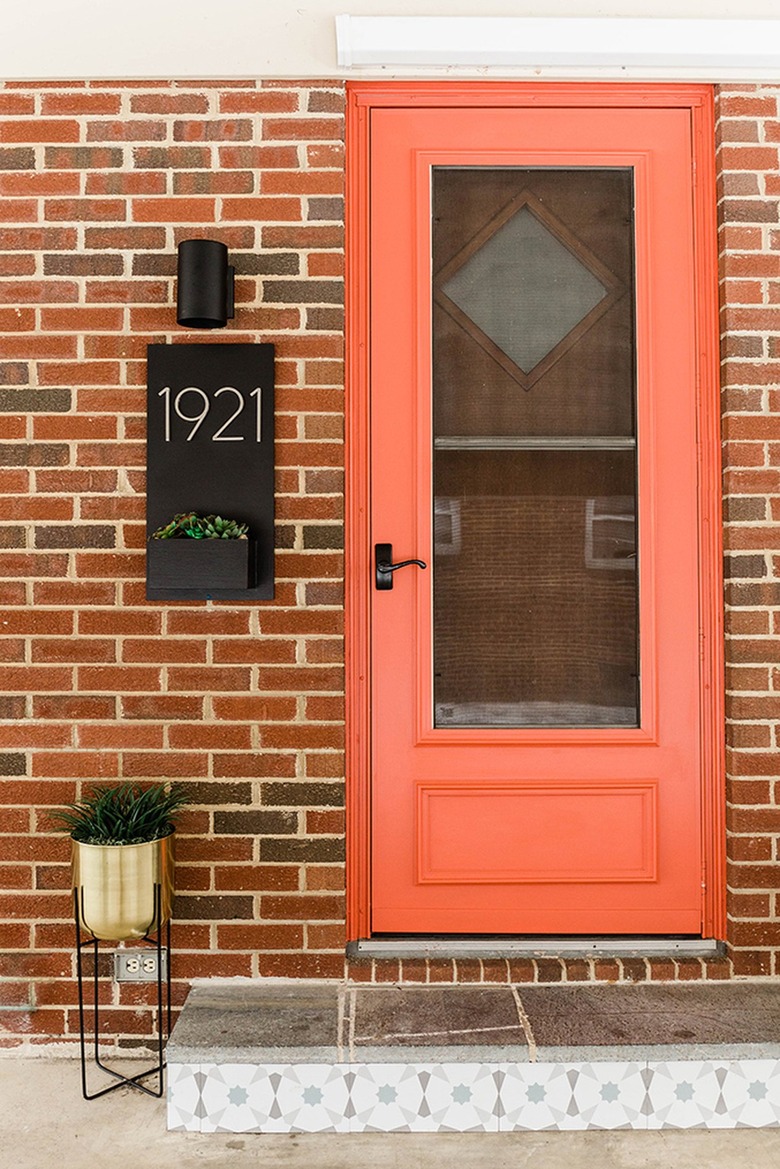Storm Door Vs. Screen Door: What Is The Difference, And How Do You Choose?
We may receive a commission on purchases made from links.
In casual conversation, people often use the terms "screen door" and "storm door" interchangeably, which makes sense since both have panels that allow natural light into a home while also keeping pests out. But beyond this one similarity, the two exterior door options are quite different since storm doors, as the name implies, can protect your home from cold weather, whereas screen doors are mostly just useful in warm weather.
But if you're shopping for an additional exterior door to stream in the sunlight, which should you choose: storm door or screen door?
Tip
The difference between storm doors and screen doors is that storm doors have a glass panel that allows the door to be useful even during bad weather, and a screen door offers no protection from storms or cold weather. When it comes to which option is best for your home, it's important to take into account your location, climate, and lifestyle.
What Is a Screen Door?
What Is a Screen Door?
A screen door is essentially a framed panel with screen covering the majority of the door length or just the top half. These doors let fresh air and light into the home while keeping out unwanted insects and critters, but that's about all they can do. The doors have only a few components: the frame, the hinges, the closer, and the screen. The frames are most commonly made of aluminum or wood, but they can be made from other materials, such as vinyl.
Historically, screen doors were secured with a spring that pulled the door closed, creating a definitive "thwack" sound when the door closed, but modern screen doors are more commonly fitted with either a spring-loaded hinge or a hydraulic door closer that pull the door closed more slowly and quietly than a spring. Most of these closers also feature stoppers to prop open the door. Most people prefer these modern closers unless they want their door to close quickly or if they enjoy the loud sound of the door slamming closed on its own for nostalgic reasons.
What Is a Storm Door?
What Is a Storm Door?
Whereas screen doors are known for their screens, storm doors are defined by their glass panels. The glass panel allows in natural light while protecting the home from insects, animals, snow, wind, rain, cold, and heat. The best storm doors have double- or triple-pane windows and can include an optional low-emissivity film to keep more heat from leaving your home or from coming in depending on your situation. Though most homeowners choose full-view storm doors, they are also available with glass inserts in the top, middle, and/or bottom of the door, allowing for a variety of styles or functions — for example, a door with a glass insert in the top can also incorporate a pet door.
Storm doors have more pieces overall, and while screen doors are typically just mounted with hinges to either side of the entry door trim or frame, storm doors have their own frames with two sides and a top, or header, piece. These frames are typically made from sturdy materials, such as steel, aluminum, or vinyl-covered wood. Most storm doors also have their own locks, providing an extra layer of security. Those looking for increased protection should look for a security storm door, which features decorative metal bars or scrollwork to protect the glass/screen panel as well as heavy-duty deadbolts and hardware designed to keep out thieves.
Some storm doors feature a built-in or retractable screen that slides out of the way when you don't need ventilation. This means it's out of sight and does not obscure the view, and it's protected inside the door, so it will not suffer damage during heavy storms. By contrast, conventional storm doors have either permanent screens, much like standard windows, or they have a full-view screen panel that you swap out with a glass panel for the cold season.
Which Option Is Right for Your Home?
Which Option Is Right for Your Home?
Screen doors are great for allowing in fresh air and natural light, but they offer no protection from extreme weather. Because they do not have their own frame like a storm door and are mounted with simple hinges, screen doors can easily be ripped off the hinges in heavy winds. This is why homeowners who live in areas known for large storms have to remove the screen doors during winter by removing the hinge pins. Since storm doors are secured in a frame rather than just attached with a simple hinge, they can stay on the door year-round, even during the worst winter storms. For this reason, those who live in areas with hazardous winter weather are typically best off purchasing a storm door, especially since it can help insulate the home as well.
For those in more temperate climates, screen doors can be advantageous since they allow in more air, are less expensive, and are easier to install if you're going the DIY route. They are great for allowing conversation between those outside and those inside, but on the other hand, if you have nosy neighbors, you might prefer a storm door since it can help keep your indoor conversations private. If you run your air conditioning a lot over the summer, you might also prefer the increased insulation of a storm door over a screen door, especially since you can still open the front door and look out the storm door while the air conditioner is running without letting out all the cold air.
In homes with pets, a storm door may actually be preferable to a screen door since dogs and cats can easily claw through screen doors. Those who prefer screen doors but are worried about pet damage can purchase a screen door with a solid panel on the bottom half or install a pet grate over the bottom half of the screen door. (It's worth noting that both screen doors and storm doors can be made with pet doors.)
If you are torn between the increased security and insulation of a storm door but seek the increased airflow provided by a screen door, the best option is usually a full-view storm door with a full screen panel. On the other hand, if you don't really want to deal with two doors all year and you just need some insect protection for the dog days of summer, a classic screen door will best fit the bill (and you can take it off once the bugs are gone).



